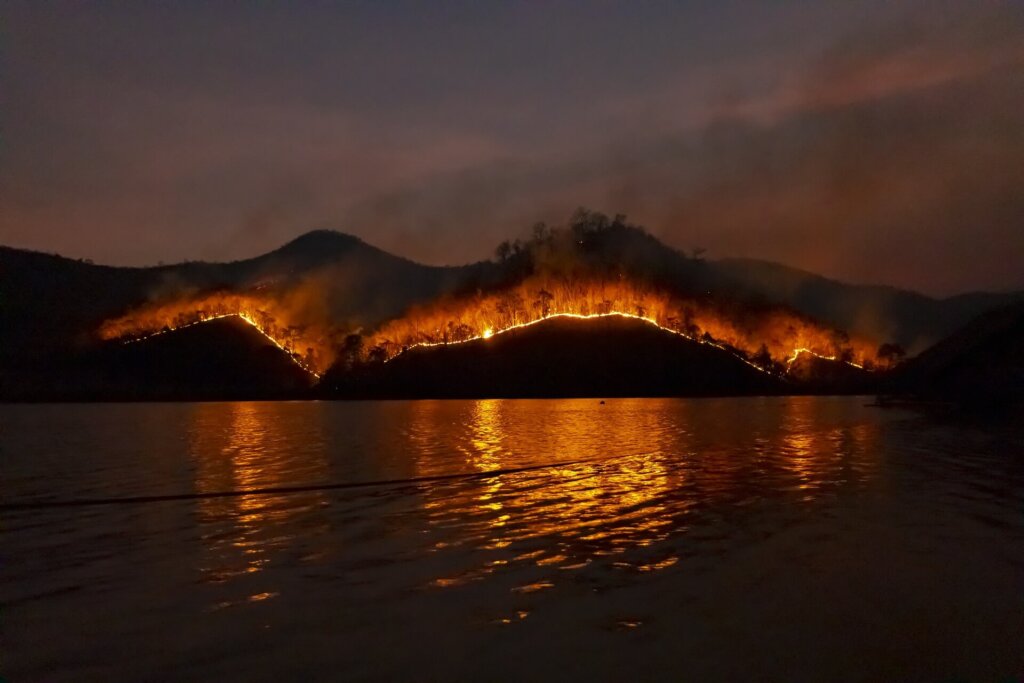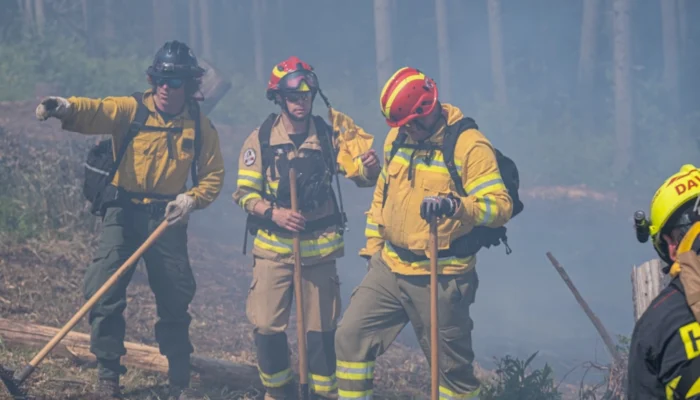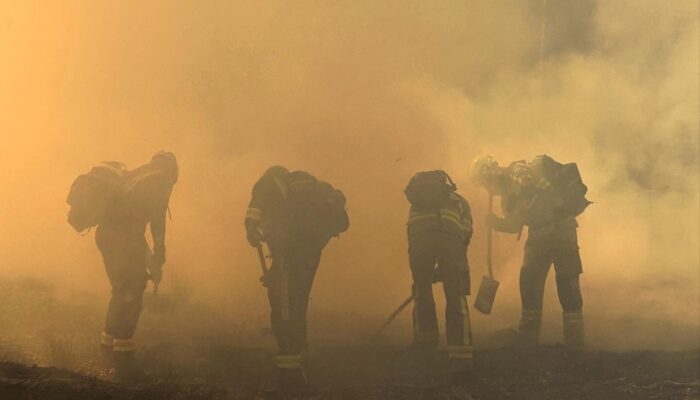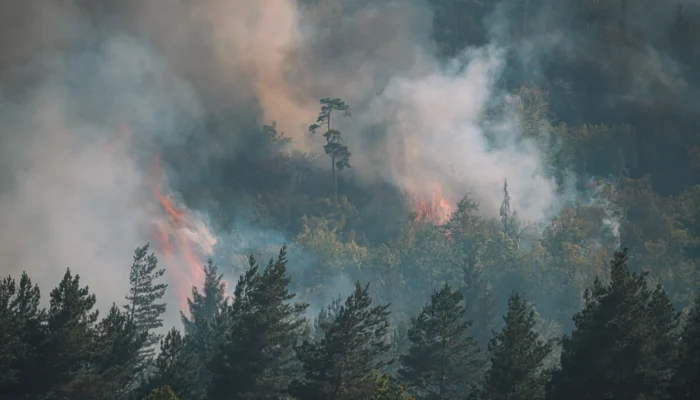Even if you’re lucky and live in an area where wildfires are not a common occurrence, you’ve certainly heard of them. With millions of people affected and entire ecosystems burnt to the ground each year, they are one of the most visible effects of climate change. But to fully understand the nature of wildland and forest fires, their causes, risks, and impacts, it’s important to delve deeper into this topic rather than rely solely on the general information you can get from the news. To help you with your research, we’ve prepared a comprehensive guide with basic interesting wildfire facts gathered in one place.
.
Table of Contents
ToggleWhat Is a Wildfire?
Let’s start with a simple definition of a wildfire. It’s a large, unplanned, and uncontrolled fire in forest or wildland areas. There are three main types of wildfires:
Ground fires (Also called underground fires because that’s where they occur. Ground fires burn organic matter stored underneath the forest floor, such as peat and humus, and spread slowly throughout the area. They often smolder rather than produce flames, which makes them difficult to detect and contain.)
Surface fires (These fires occur on the forest floor and within the lower level of vegetation. Surface fires are usually characterized by low intensity and burn mainly leaf litter, duff, dry ground-level vegetation, fallen branches, and so on. However, in dry weather conditions or due to unnatural buildup of the so-called fuel layer, fire activity can become more intense and difficult to contain.)
Crown fires (This is by far the most destructive and fast-spreading type of wildfire. A crown forest fire, as the name suggests, occurs in the highest level of forest vegetation, which means that it consumes not only the lower layers of vegetation, like in the case of surface fires, but entire trees. Due to their nature, crown fires can be detected relatively quickly, but their intensity and unpredictability often complicate firefighting efforts.)
It’s not uncommon for more than one type of wildfire to occur at the same time, especially during dry and hot summer months.
.
What Causes Wildfires?
Unfortunately, fires in wildland areas are often the result of human activity, with debris burning, unattended campfires, discarded cigarettes, machinery failures, and arson among the most common causes of wildfires. Naturally occurring forest fires are most often caused by a lightning strike.
.
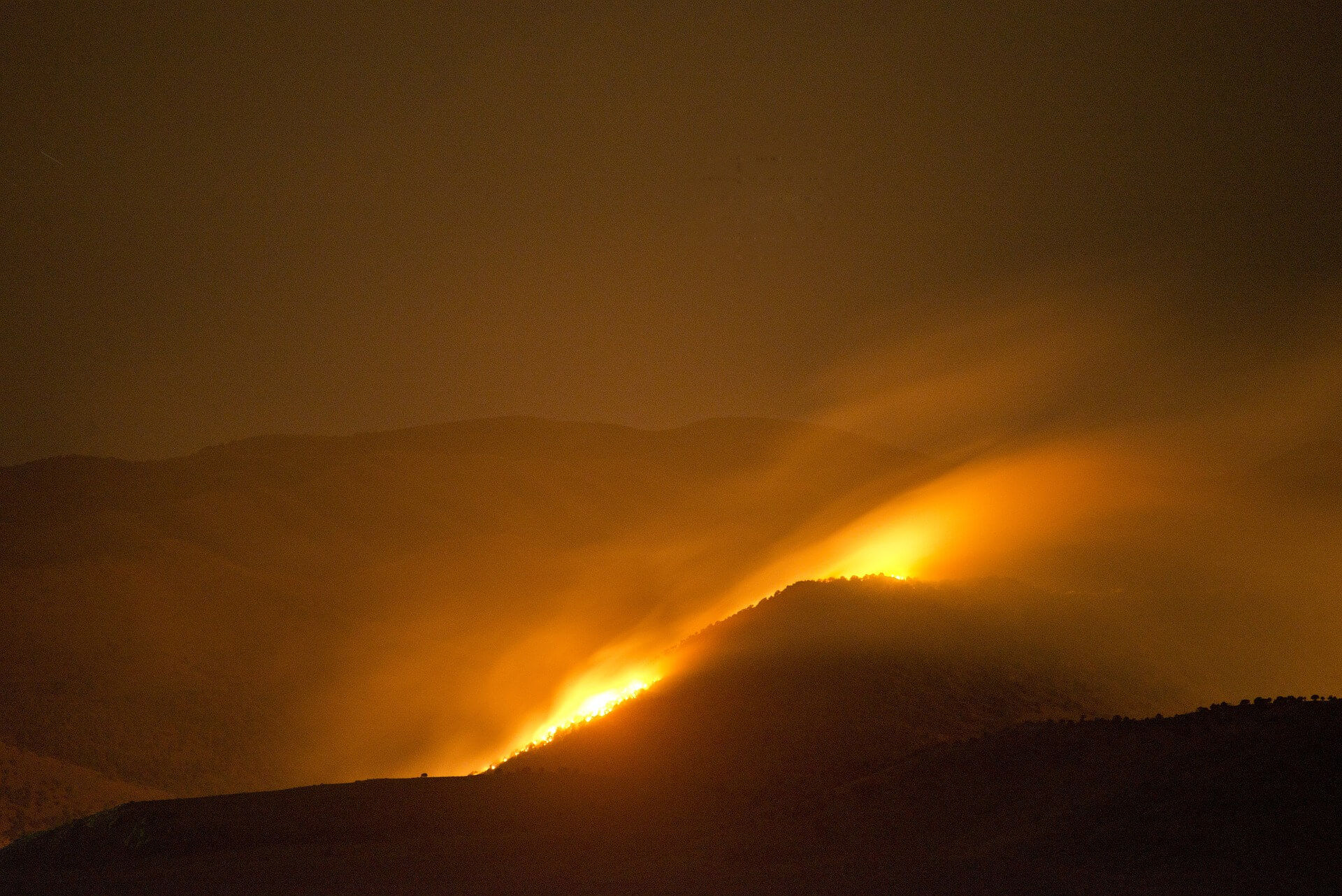
.
How Do Wildfires Spread?
Even though wildfires, including different stages of fire from ignition to its burnout, are well-documented, their unpredictability and ability to spread rapidly still make them one of nature’s most destructive forces. The two main factors that help wildfires spread are wind and heat. When a fire starts, it generates heat that dries out vegetation in the area, creating conditions that can further fuel its spread. That’s why dry vegetation and the buildup of dry leaf litter are counted among the factors that increase the wildfire risk. As for the wind, it can carry burning embers, debris, and sparks even over significant distances, causing the spread of fire and even starting new fires in different locations.
.
What Is the Difference Between a Fire and a Wildfire?
The main distinction between these two types of fires is their location. While fires can emerge anywhere, the term wildfire is reserved specifically for fires that occur in forest and wildland areas. A wildland fire is typically more difficult to detect and contain due to its remote and hard-to-reach location.
.
Where Do Wildfires Occur?
Wildfires can occur anywhere. While the most talked about fires in recent years were in the US and Australia, other parts of the world experience wildfires as well, including places so far apart as the Amazon, Central Africa, Southern Europe, and Siberia. Wildfire risk is a global phenomenon that is only becoming more widespread and destructive as the effects of climate change become more noticeable.
.
How Common Are Wildfires?
Wildfires are not only common, with thousands occurring each year in the US alone, but are also becoming more frequent as a direct result of climate change and unprecedented heat waves. While in the past, wildfire seasons were usually limited to the summer months, today, they are becoming longer, with more and more experts saying that they are increasingly becoming a thing of the past.
.
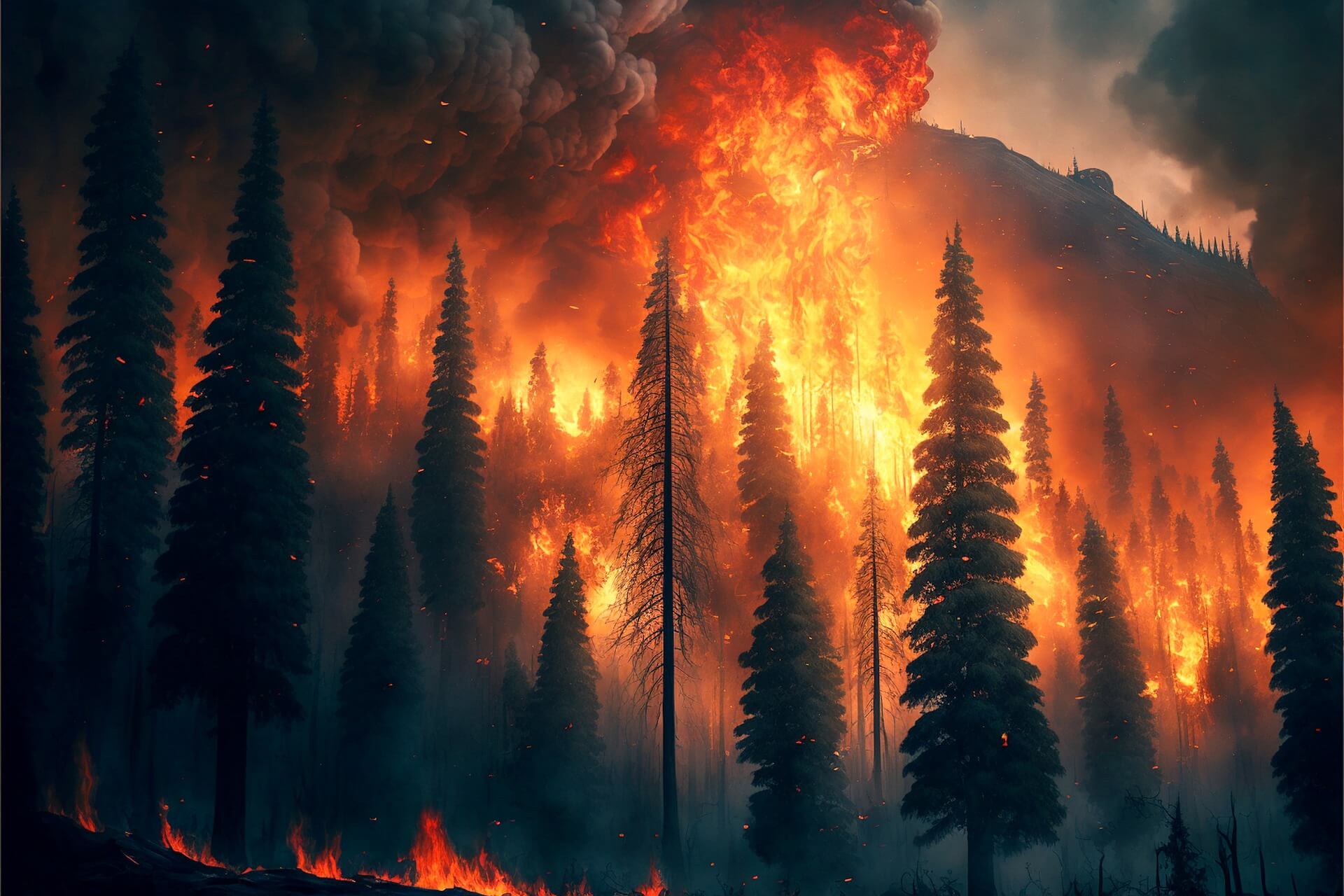
.
What Are the Effects of a Wildfire?
While wildland fires have certain benefits (they can, e.g., prevent the unnatural buildup of leaf litter by burning excess dead organic matter), unplanned and uncontrolled wildfires are a serious threat to both wildlife and people. Such fires can not only endanger lives and property, e.g., destroy homes, but have many long-term effects on ecosystems and local communities, such as deterioration of air quality, disruption of transportation and services, loss of crops and resources, and increased greenhouse gas emissions, among others.
.
Can Wildland Fires Be Prevented?
Yes, many wildfires can be prevented through proper forest management, implementation of early fire and smoke detection systems, and addressing common fire hazards in advance. But as human activity is among the most common causes of wildland fires, it may also be a good idea to create educational campaigns focused on explaining the risks and proper handling of fire, or posters for campgrounds, reminding visitors to extinguish campfires and be careful with cigarettes. These are just a few examples of effective wildfire prevention methods.
.
What Methods Can Be Used to Fight Wildfires?
Once a forest fire gets out of hand, putting it out becomes an extremely difficult and often very dangerous job. So what methods do firefighters use to fight wildfires? One of the basic methods used in wildfire suppression is the use of control lines. These lines can be natural (e.g., a river) or man-made (e.g., created by burning out potential fire fuel in a specific area) and are used to contain wildfires within the created boundaries. Other essential elements of firefighting efforts include monitoring the spread of a wildfire and identifying its most active and dangerous parts.
.
The Use of New Technologies in Wildfire Detection and Risk Management
In dry conditions, even a relatively easy-to-contain surface fire can intensify enough to ignite tree crowns and spread over vast areas given enough time. That’s why early wildfire detection is essential. This brings us to the potential of modern solutions such as AI-powered detectors, drones, and machine-learning algorithms when it comes to wildfire prevention efforts. By implementing effective fire and smoke-detecting solutions, such as our SmokeD automatic smoke detection system, it’s possible to spot early signs of fire from long distances and send automatic alerts to firefighting services. This significantly increases the chances of successfully containing a forest fire in its early stages, before it transforms into an uncontrolled fire, and gives enough time to evacuate the areas in immediate fire danger to save lives and assets.
